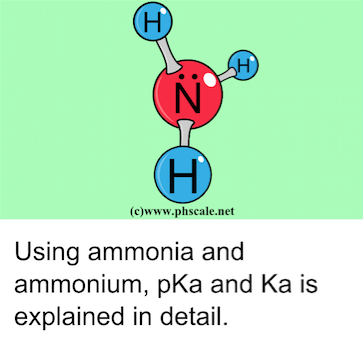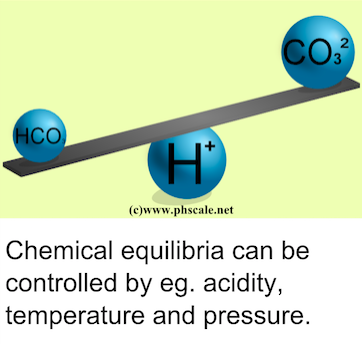As shortly explained in the section about how to calculate pH in a solution of dissolved NaHCO3, a buffer has the capability of keeping pH withina certain and narrow range even if an excess of hydrogen ions H+or hydroxide ions OH–are added.
In this particular page I will elaborate a bit on why buffers actually have the capabilities of resisting changes in pH when acid or base is added.
Before I move on I suggest you read the pdf documents showing how equilibriums are calculated and how pH in a NaHCO3solution is calculated.Links are found in the margin to the left. Also notice that this webpage also has its own pdf version.
Topic:pKa& Ka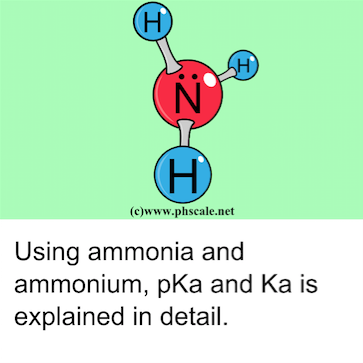 | The basics |
NaHCO3considered
Consider the solution mentioned in the NaHCO3section made up of 0.1 M NaHCO3. We can show that unlike pure water this solution ofsodium bicarbonate is extremely good at resisting pH changes when HCl is added.
Now in order to follow the arguments an excel spreadsheet isneeded to do all the calculations. You can download the spreadsheet for this example by clicking here.
As is seen in this excel spreadsheet at the end of row 16, the pH in the solution is 8.31. Now let’s figure out what happens when 0.0005 mole HCl is added(volume change is neglected).
This starts at row 20 in the excel document. In row 29 it is seen that the pH should decrease to approximatelypH = 8.21 which is not much.
Had it been a solution of pure water the pH would have dropped to -LOG10(0.0005) = 3.3.
Ions and compounds are in equilibriums with each other. A typical equilibrium is the one between ammonia (NH3) and ammonium(NH4+) discussed in the section about pKa and Ka. These types of equilibriums are dependent on pH.
pH determines how much of a compound or an ion in an equilibrium is dissociated. A simple example is already given in the pKa / Ka section, so here’s abetter one:
Topic:Ideal Gas Law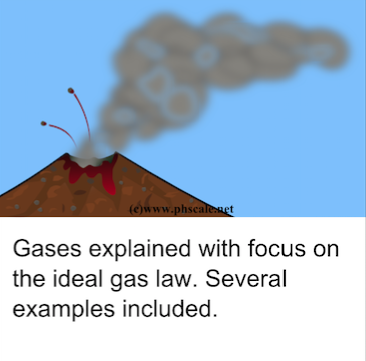 | Ionic Strength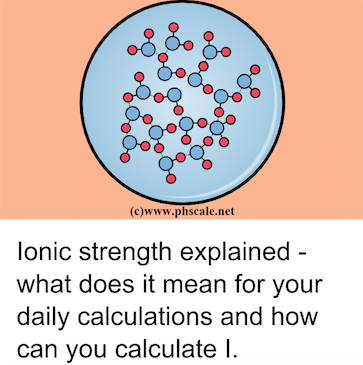 |
Consider the equilibrium between carbonic acid, bicarbonate and carbonic ion: H2CO3, HCO3–and CO32-. First of all it should be noted that only approximately 1/400 of the carbonic acid H2CO3is inthe form H2CO3. The rest is on the form CO2.
For this reason the carbonic acid in the “inorganic carbon equilibrium” is often denoted CO2*even though it at firstsight seems unreasonable that CO2*can dissociate into HCO3–.
To calculate the concentration of individual species in the equilibrium one first have to introduce a variable denoting the sum of concentrations ofCO2*, HCO3–and H2CO3. This variable should be called TIC – a shortcut forTotalInorganicCarbon.
TIC = [CO2*] + [HCO3–] + [CO32-]
If we start by finding the [CO2*], CO2*should be isolated in the above equation. By rearranging the equationabove to:
TIC = [CO2*].(1+ [HCO3–] / [CO2*] + [CO32-] /[CO2*])
If both sides are divided by (1+ [HCO3–] / [CO2*] + [CO32-] / [CO2*])we get that:
[CO2*] = TIC / (1+ [HCO3–] / [CO2*] + [CO32-] /[CO2*])
To move on with this equation and to see how it depend on [H+] we introduce [H+] in the denominator:
[CO2*] = TIC / (1+ [HCO3–].[H+] / [CO2*].[H+] +[CO32-] / [CO2*])
Topic:Equilibriums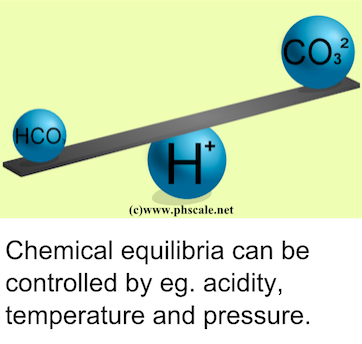 | The pH scale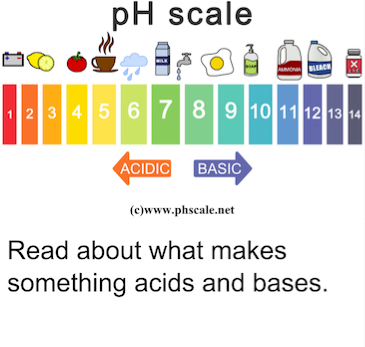 |
At this point it is necessary to recall the definition of the dissociation constant. A more detailed explanation on this subject can be found on the siteabout pKa and Ka.
The ionisation constant of CO2*is [H+].[HCO3–]/[CO2*]
This ionisation constant can be substituted into denominator of the equation for TIC:
[CO2*] = TIC / (1 + Ka(CO2*) / [H+] + [CO32-] / [CO2*])
The calculation is not finished yet. [CO32-] and [CO2*] are not known.
They cannot be substituted the same way as before. However, the ionisation constant of HCO3–is [H+].[CO32-]/[HCO3–].
If this, the ionisation constant of HCO3–is multiplied by the ionisation constant of CO2*we get that:
Ka(HCO3–).Ka(CO2*)=[H+].[HCO3–]/[CO2*].[H+].[CO32-]/[HCO3–] = [H+]2.([CO32-] / [CO2*]).
But this is the same as saying that:
Ka(CO2*).Ka(HCO3–) / [H+]2= [CO32-] /[CO2*]
This can be substituted into the equation for the [CO2*] from before:
[CO2*] = TIC / (1 + Ka(CO2*) / [H+] + Ka(HCO3–).Ka(CO2*) / [H+]2)
NaHCO3dissolved in water – how is pH calculated?
Background about buffers
A buffer is a solution that has the ability to keep pH within a certain and narrow range: even if an excess of hydrogen ions (H+) isapplied to the solution. In other words:buffers resist changes in pH when reasonable amount of either H+or OH–is added to thebuffer solution.
There are many examples of buffers. Blood in humans is a well buffered system buffered by several buffers. Seawater is a buffer, and it is buffered aroundpH=8.4, mainly because of sodium bicarbonate.
The purpose of this particular webpage is to show how pH can be calculated in solution made by dissolving sodium bicarbonate (NaHCO3) in water.
Example:
Consider a solution made of 0.1 M NaHCO3. The sodium bicarbonate will dissolve into Na+and HCO3–. Furthermore,the HCO3–will partly split into fractions of CO2and CO32-, respectively depending on pH. First ofall we should start by finding out what will happen to NaHCO3when it dissolves in water.
This is easier than it might seem. We simply use the fact that the charge balance is always zero in an aqueous solution. From the pdf document aboutequilibrium, we know how to calculate the [CO2], [HCO3–] and [CO32-]. In fact, it is not necessaryto calculate the [CO2] but to help understand what is going on, it’ included in the following calculations that can also be seen in anexcel spreadsheet.
From the chapter aboutequilibriumswe already know that:
| Compound / ion | Calculation |
| [CO2]* | TIC / (1 + Ka(CO2*) / [H+] + Ka(HCO3–).Ka(CO2*) / [H+]2) |
| [HCO3–] | TIC / (1 + [H+] / Ka(CO2*) + Ka(HCO3–) / [H+]) |
| [CO32-] | TIC / (1 + [H+]2/ (Ka(HCO3–).Ka(CO2*)) + [H+] / Ka(HCO3–)) |
In this case we are adding 0.1 M NaHCO3we are adding 0.1 M Na+and 0.1 M HCO3that is distributed amongCO2*, HCO3–and CO32-depending on pH. This pH or [H+] is easilycalculated (not considering ionic strength).
Step 1: A charge balance is established
It must be that [Na+] – [HCO3–] – 2.[CO32-] = 0.
If not, the charge balance is not zero and something is wrong. This equation can be fine-tuned to include [H+] and [OH–] so thatthe equations is:
[Na+] – [HCO3–] – 2.[CO32-] + [H+] – [OH–] = 0
We do not know either the [HCO3–] or the [CO32-] as the [H+] is unknown.
However, by trying out with the different [H+]s in the equation:
[Na+] – TIC / (1 + [H+] / Ka(CO2*) + Ka(HCO3–) / [H+]) -2.TIC / (1 + [H+]2/ (Ka(HCO3–).Ka(CO2*)) + [H+] /Ka(HCO3–)) + [H+] – 10-14/[H+]= 0
It is seen that when [H+] is 10-8.31the equation is fulfilled. This leads us to the conclusion that a 0.1 M NaHCO3hasa pH of 8.31. All calculations are shown in the excel spreadsheet. It is now up to the reader to figure out why thepH of 0.5 M NaHCO3solution is also 8.31 and why only very, very dilute solutions of NaHCO3have a pH closer to 7.
This page is also available as a pdf-document that can be accessed by clicking here.
Privacy Policy:Some third-party advertisers may, or may not, use beacons and or cookies providing them with information about yournearest telephone (ADSL central), browser type, screen resolution, flash version, and operating system. You can disable this option in the privacysettings of your web browser. Google, as a third-party-vendor, also use a cookie called the DART-cookie to serve ads based on your interests.You can opt out of the Dart cookie at the Google ad and content network.
Web resources
Theory about chemical equilibriums
A complete e-book about equilibriums (free)
Buffers explained at Chemguide
Buffers in blood
A model (for download) illustrating the dissolving of salts




